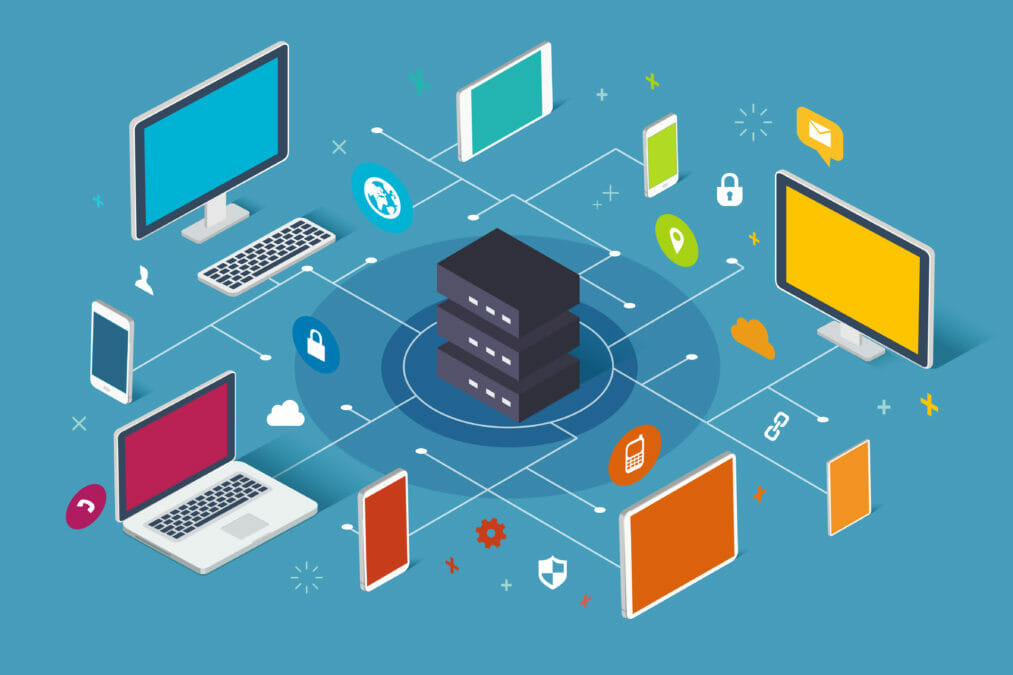We’re now well into the second year of the pandemic and it’s fair to say a lot has changed. No executive – no matter how attuned they were to technology or business trends – could have predicted the changes Covid-19 would bring about. We’ve had to adapt to new ways of doing business, in our homes and away from branch offices, and as a result many organisations’ approach to technology has been turned inside out. At the centre of everyday operations have been Internet and digital platforms, with user experience becoming fundamental to both employee productivity and customer satisfaction.
So, what does this new enterprise reality look like today? And what should businesses be considering moving forward?
More digitally savvy employees
Up until last year, for many of us, digital interactions were largely centred around social engagements or entertainment. However, with the acceleration in digital transformation in the last year, education, work and family life are all becoming increasingly digital. Even employees who have previously shied away from technology have now become accustomed to new ways of business and using collaboration applications to maintain communication between disparate teams.
As a result, the emergence of a new hybrid workforce will require more digital skills – employees will need to become accustomed to using digital tools to do their job efficiently. Investment in understanding how to leverage digital resources is not only a differentiator today, but a necessity for the future.
Disruptive Innovation: The emerging sectors applying digital technologies
Securing the edge is critical
Meanwhile, security teams are mulling over their options. Security, as well as other sensitive enterprise IT functions, now have to be effectively implemented in the remote office. That means VPNs, secure gateways and other security measures are all being pushed to the edge of the network and closer to remote employees. As a result, these solutions now rely on public networks—like cloud providers, Internet Service Providers, and SaaS solutions for delivery.
That’s enough to make even the most confident executives uneasy. However, like it or not, remote working is here to stay. And with this in mind, we’ll see enterprises look more closely at secure remote access solutions on a more long term basis.
A SaaS explosion
It’s no secret that apps are the lifeline of any business today. They are the way companies deliver products, the way employees get work done, and the way customers consume services. Without them, we’d be lost, and the last year has only amplified this further. Think of how many applications you use daily – whether that’s WebEx, Microsoft Teams, Salesforce or Sage. SaaS adoption isn’t a new thing though — it’s been accelerating for several years now, and this trend will continue in the post-pandemic era. In fact, Gartner predicts that globally we’ll spend $20 billion more on SaaS solutions in 2021 than we did in 2020.
As SaaS continues to become increasingly pivotal to business productivity, organisations should consider how best to maximise these experiences for a hybrid workforce. The challenge for employing SaaS apps en masse is that they often run across multiple clouds, regions, and data centres – environments beyond the IT perimeter and beyond the influence of IT staff. So, while the public internet plays a critical role in the delivery infrastructure, it also presents critical gaps in IT visibility.
The lessons SaaS businesses must learn from 2020
User experience is king
Enterprise infrastructure has undergone significant transformation over the past 12 months in order to support a growing number of users working off premises. While data once flowed from branch offices to the data centre, we’re now seeing a snowflake effect – with IT having to see, manage and optimise the flow of data to and from remote employee offices over the cloud and Internet providers and, importantly, outside the control of the organisation.
Businesses may not control or own these services but they are still expected to own the user experience – whether that’s an employee’s or a customer’s. Said expectations regarding user experience from both parties, who have become familiar with digital-first services, have skyrocketed over the last year.
However, over the past year, our deep reliance on the Internet and its ecosystem of third-party providers has only highlighted just how fragile user experience can be when one or more of these services experience a disruption.
A new breed of monitoring for a new normal
To deliver this optimised digital experience, we are learning that we need to look outside the digital four walls. Cloud and SaaS adoption was occurring, and accelerating, long before the pandemic disrupted our lives. IT leaders were already getting used to the notion of giving up control of the networks we depend on. But the pandemic put us all into overdrive.
Traditionally, organisations will have equipped themselves with network monitoring tools and a separate application performance monitoring solution – meaning data is often disjointed. However, this model is no longer fit for purpose in 2021. Today, enterprises need correlated insights that provide end-to-end visibility across the Internet, cloud through to the application layers including delivery and performance, regardless of where a business’ users are around the globe.
Remote working is now happening at a scale we’ve never seen before and could probably have never even been anticipated. As a consequence, it’s having a substantial and systemic impact on the technology stack as we know it. Traditional enterprise networks have been re-imagined with enhanced resilience and adaptability and user experience have become critical capabilities for any organisation.
With this, comes a silver lining. A flurry of new innovation is already helping companies to adapt, to ease into digital transformation – this time for real. New solutions are emerging to provide the visibility, security, and management that IT leaders will need as they embrace a complex web of Internet-dependent application architectures. Welcome to the new enterprise reality.











